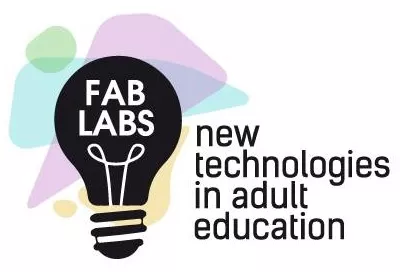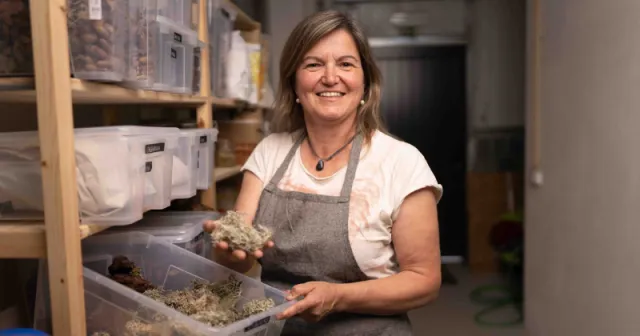Fablabs as adult learning environments
First published in Polish by Ewa Orzeszko
The term fablab is an abbreviation of Fabrication Laboratory – a digital laboratory or workshop in which, thanks to computer controlled devices (such as 3D printers, milling machines or laser plotters), you can transform your ideas into prototypes or finished products.
As defined by The Fab Charter (http://fab.cba.mit.edu/about/charter/), fab labs are: “a global network of local labs, enabling invention by providing access to tools for digital fabrication. Fab labs are available as a community resource, offering open access for individuals as well as scheduled access for programs”.

The concept of fablabs was born at one of the most important American technological universities – MIT (Massachusetts Institute of Technology). The originator of this concept was Professor Neil Gershenfeld, head of the Bit and Atom Center at MIT, who launched the “How to make (almost) anything” course at that university in 1998, and who today is considered the originator of the first fablab and an active promoter of this idea. Professor Gershenfeld proposed a revolution in design and production: any student of the university could enroll in the course, regardless of the field of study. Thus, the group consisted of people with different skills and competences. The group worked in a well-equipped studio: they had computers, a laser cutter, a 3D printer, and a set of electronic components at their disposal. But what mattered the most was their ideas, and the tools were only there to serve its implementation. When the fablab idea became a success, Neil Gershenfeld decided to test its effectiveness in the field.
The idea was simple: to provide the right environment, skills, advanced materials and technologies to cheaply and quickly create things anywhere in the world, and make such spaces available locally – for entrepreneurs, students, artists, small businesses, and in fact for anyone who wanted to create something new. The objective was to stimulate innovation, creativity and entrepreneurship. The concept of fablabs is therefore strongly based on the idea of DIY (do-it-yourself) and the maker movement.
Currently, the global network of fablabs is an open creative community of makers, artists, scientists, engineers, educators, students, amateurs, professionals of all ages, attending approximately 1.7 thousand fablabs in over 100 countries. From small, community workshops to advanced research centers, fablabs share the common goal of democratizing access to technical innovation tools.
Officially fablabs are places that comply with the so-called “The Fab Charter” and are part of the Fablab Network (participation in it requires, among others, the obligation to have specific equipment, facilitating the sharing of knowledge, exchange of people and projects). However, there are also spaces with other names, which fulfill similar functions – makerspaces, hackerspaces, production studios or medialabs.
At the root of fablabs is the desire to democratize production and dissemination of technology. Fablabs are physical spaces, but also Internet communities. With an approach to creation often referred to as “DIY”, they provide technological resources, collective knowledge, as well as high- and low-tech tools. The methodology of fablabs is based on active participation, knowledge sharing, importance of mentor/trainer participation in the learning process and cooperation of people with different skills and competences. It is also based on the DIY culture ethos, the curiosity of the creators, and trial and error. It is as much a “do-it-yourself” approach as “do-it-with-others” and “make-to-learn”. Emphasis is put on mutual learning and spontaneous inspiration than on a specific didactic approach.
Fablabs are also platforms for learning and innovation: places to play, create, learn and invent. They work by offering access to shared infrastructure, digital production tools, and a community of practice. They are usually equipped with carpentry and electrical tools, 3D printers, computer-controlled machine tools (CNC), electronics (e.g. Arduino platforms and Raspberry Pi microcomputers), computers and programming tools supported by open source software, and their activities include textile crafts, electronics, advanced robotics or traditional woodworking. Fablabs offer both participation in structured courses and the possibility of tinkering independently.
In short, they provide open access to machines and tools, but also the knowledge and experience of other people. They enable innovations, but also, for example, the repair of broken home appliances. Thus, they respond to the needs of people with different competences, skills and material resources. The primary goal is to implement your own ideas, develop a passion, and increase joy in learning. Thanks to the idea of sharing, fablabs are generally accessible and (usually) non-commercial places. Thus, they foster the fight against technological and digital exclusion, they also support grass-roots initiatives and the involvement and cooperation of local communities.
While fablabs focus on innovation, prototyping and production, they are primarily communities, supporting the learning of new skills and abilities based on individual interests, experience, self-expression and creativity. Using a make-to-learn approach, they empower users to access previously unavailable tools and skills that are essential to succeed in the 21st century economy. Thus, they raise the general level of technical education in societies. Fablab as an adult learning environment support the development of key competences, incl. mathematical competence and basic competences in science and technology, digital competences, learning to learn, sense of initiative and entrepreneurship. These are environments of real cooperation and collaboration, focused on a democratic approach to education, with an emphasis on learning through direct experience, joint projects, DIY and innovation. Fablabs thus proposes a new model of education and learning that extends beyond the framework of the traditional education system, integrating the environments of creative people, creating local communities and local learning environments.
The number of fablabs has increased significantly over the past decade. Today, most major cities in Europe have at least one space dedicated to digital fabrication and new technologies. However, their legal forms, modus operandi and target groups differ greatly from one European country to another. In some countries, fablabs are usually placed at universities or technology parks, in others they take the form of non-governmental organizations or school classes. More and more often, workshops of this type are also established in cultural institutions (community centers, libraries). These differences in fablab work and in the different forms of learning they offer are taken into consideration in the Strategic Partnerships in Adult Education project titled “FABLABs – new technologies in adult education”. The project, coordinated by Workshops of Culture in Lublin, Poland, brings together fablabs from various European countries (Finland, France, Iceland, Poland, Portugal), to present various ways of organizing the process of learning and the principles of cooperation with local communities. The main objective of the project is to recognize good practices in providing education on new technologies to adult learners using a fablab concept of work – to exchange know-how in the field of teaching methodology (education methods and practices), to investigate the way to apply a fablab concept to adult education, the professional development of people working in fablabs as educators and managers, as well as comparative research on teaching new technologies in non-formal education in various European countries.
Please visit the project’s website: https://fablabs-erasmus.eu/.
Comments
There are fablabs in Riga and
Fablab piedāvā lielisku
Interesting logical consequence
We are more and more involved in customization of our own things. We do things which were previously done by professionals. We configure our smartphones, transfer money from our bank account - we became professionals of product customization. During Covid lockdown we even learned hair-cutting.
It is great that there are such spaces for innovation and creativity.





Nebiju dzirdējusi par šādiem